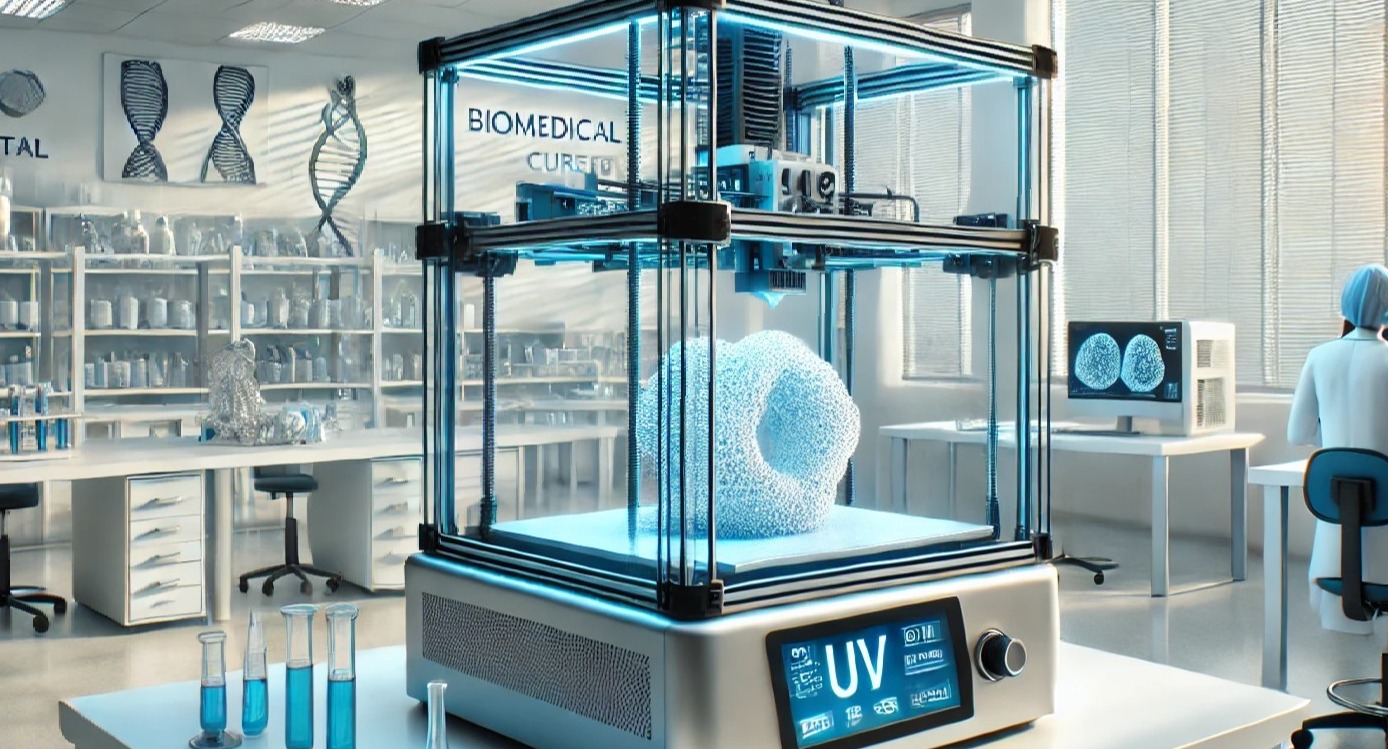Nontoxic Photoinitiators and 3D Printed Inks
KEY INFORMATION
Materials - Bio Materials
TECHNOLOGY OVERVIEW
Phosphine oxide-based photoinitiators, such as TPO and BAPO, are commonly used in biomedical applications due to their effective polymerization properties. TPO is widely used in products like coatings, inks, and adhesives. The industry is seeking safer alternatives with an upcoming ban on TPO effective from September 2025 in Europe due to its reproductive toxicity. Current alternatives focus on either low toxicity or increased water solubility, but there is a significant gap in finding a photoinitiator that combines both. This is important for applications requiring high biocompatibility, such as biomedical devices and tissue engineering.
This technology is a new generation of photoinitiators that offers significantly lower toxicity compared to TPO/BAPO, making them ideal for sensitive biomedical applications. Their enhanced water solubility allows them to integrate easily into aqueous systems without harmful solvents, supporting the demand for sustainable products. Water-soluble photoinitiators also improve biocompatibility, reducing the risk of toxicity in applications involving direct contact with biological tissues. Additionally, these photoinitiators are customizable in curing speed, depth, and substrate compatibility, making them suitable for a variety of industries including coatings, adhesives, and advanced 3D printing.
The technology owner is seeking IP licensing and R&D collaborators in the biomedical field, including manufacturers of hydrogel-based products like wound healing patches, tissue scaffolds, or bioadhesives along with companies in the materials and personal space looking for safer, sustainable photoinitiator alternatives. Medical institutions that can expand on the in vitro cytotoxicity studies or translate in vitro cytotoxicity results into in vivo animal models are also of interest.
TECHNOLOGY FEATURES & SPECIFICATIONS
- Compatible with organic and aqueous systems: These liquid, carbene-precursor photoinitiators can be incorporated into organic or aqueous systems without the need for additional co-solvents.
- Customisable properties: Liquid by nature, these photoinitiators can be incorporated into the system to elicit different properties (i.e. curing speed, porosity).
- Reduction in leachate toxicity: Diazo moieties generated through this irradiation could potentially reduce leachate toxicity by reacting and disabling monomers, contributing to safer and more biocompatible materials.
- Polymerization of various vinyl monomers: Upon exposure to appropriate wavelengths of light (such as UV or visible light), this photoinitiator generates reactive species that efficiently initiate the polymerization of various vinyl monomers. This property makes it highly suitable for use in a broad range of polymerization processes.
- Removable through washing: Enhance biocompatibility for sensitive in vivo applications such as resorbable tissue scaffolds.
POTENTIAL APPLICATIONS
- Biomedical systems: Medical devices, drug delivery systems, resorbable tissue scaffold and other biomedical systems.
- Biomedical 3D printing: Releases gases during irradiation, which allows for shrinkage compensation. Can generate porosity for cell seeding in live cell encapsulation applications.
- Dental materials: Non-yellowing, great for customisable dental applications.
- Cosmetics: Nail gels and UV-cured beauty treatments.
- Other applications sensitive to the leaching of toxic compounds: E.g. food packaging, coating, adhesives and any applications that needs to be compliant to regulations and cannot have harmful substances migrating into food or skin.
Unique Value Proposition
Current solutions in the market have a trade-off between toxicity and water solubility. These photoinitiators represent a significant advancement by combining the two features. It not only addresses current industry challenges but also opens new possibilities for innovation and application.
- Low toxicity: Notably reduced toxicity in preliminary in vitro studies.
- Water-soluble: Compatible with aqueous systems which unlocks market potential in biomedical field. Liquid formulations can be easily incorporated into large-scale industrial processes and manufacturing without the prior need for dissolution in compatible solvents.
.jpg)

.jpg)
